put some of the advice found on this thread to use when i bottled this past weekend!
made everything much much easier (except for the fact that i had to bring tons and tons of stuff upstairs to my kitchen HAHA... well atleast i got a workout.
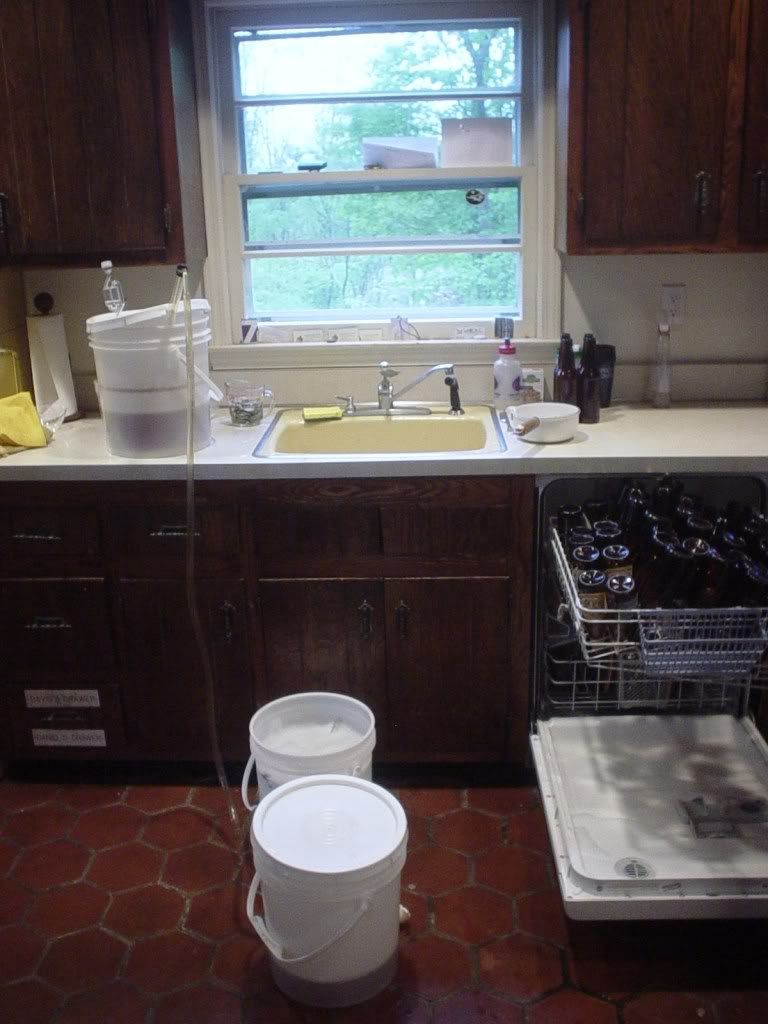
racking from the 2 5 gallon fermenters to the bottling bucket (i split 5 gallon batches into 2 5 gallon buckets - couldnt find 6.5 gal free ... wont matter much when i do 3 gal AG.. cant wait.
... wont matter much when i do 3 gal AG.. cant wait.
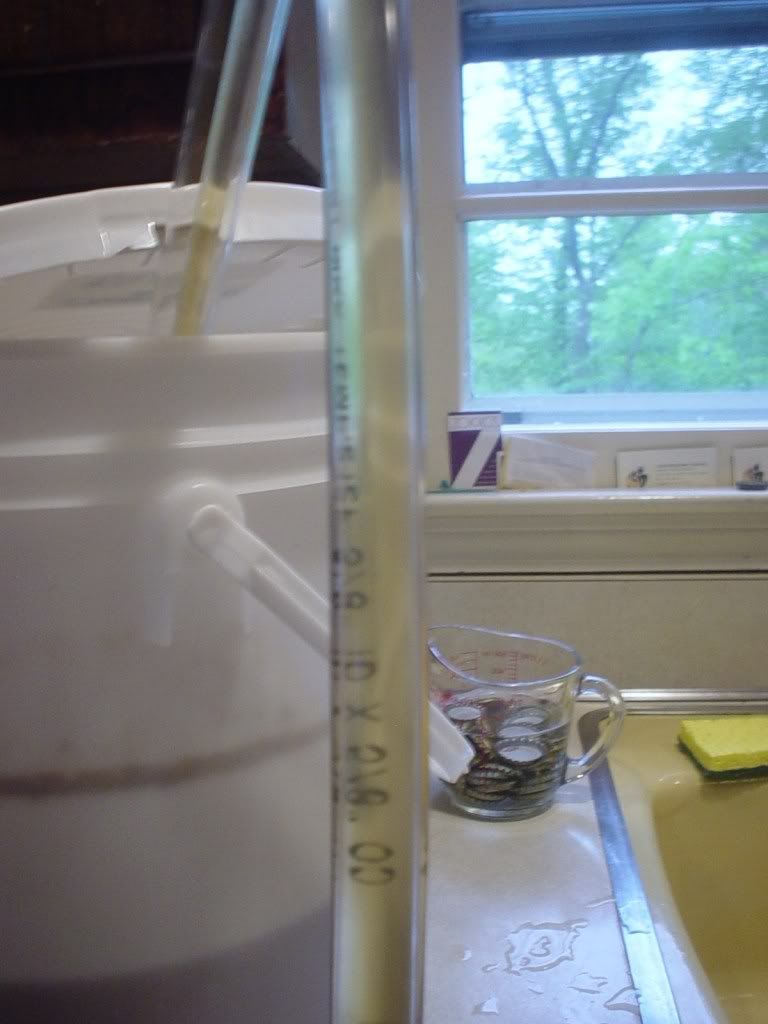
this is austinhomebrew's cream ale kit. wort hinted that this would be a tasty beer, just right for late spring early summer! after a good pint (leftover from bottling - NOTE THE MISSING BOTTLE!!!) i knew this would be a hit once carbed.
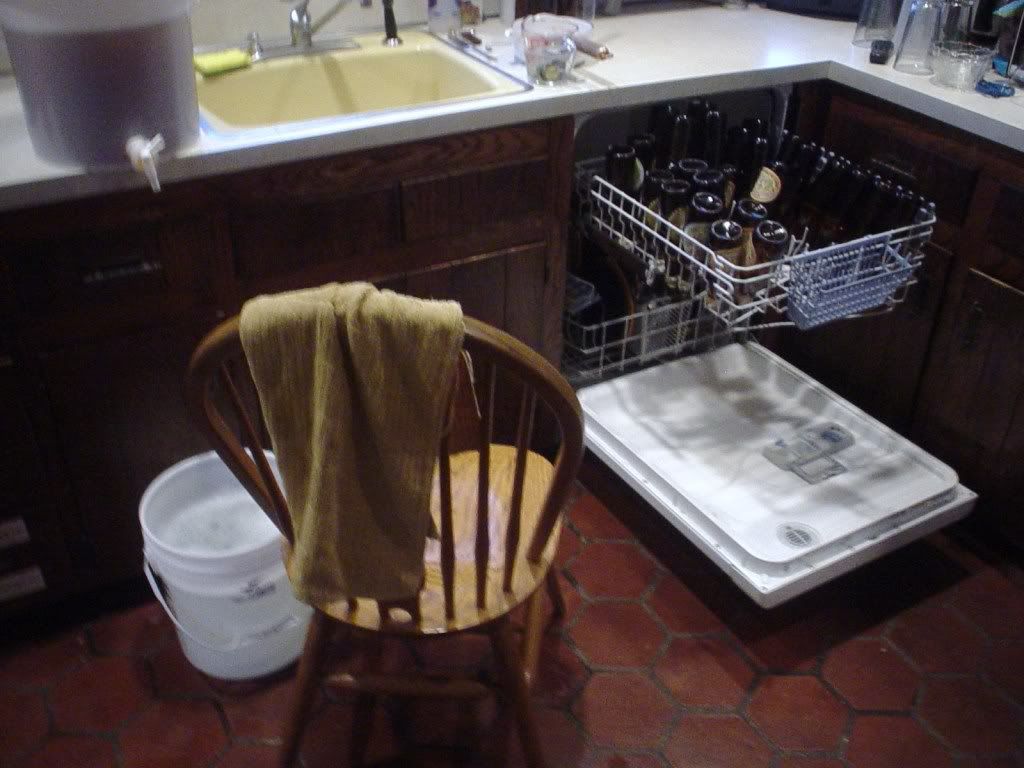
sanitized bottles go on sanitized dishwasher rack to dry.. wow what a great tip! i pull up a chair, sit back relax and start filling!..
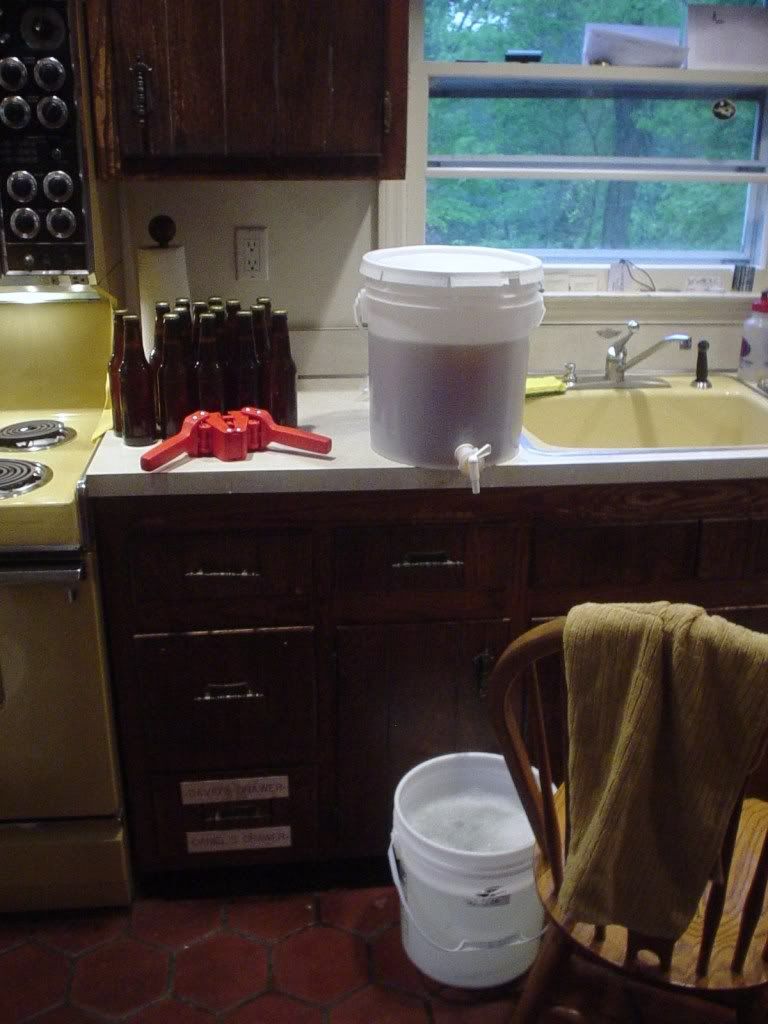
once i hit ~18 or so, i start crimping!
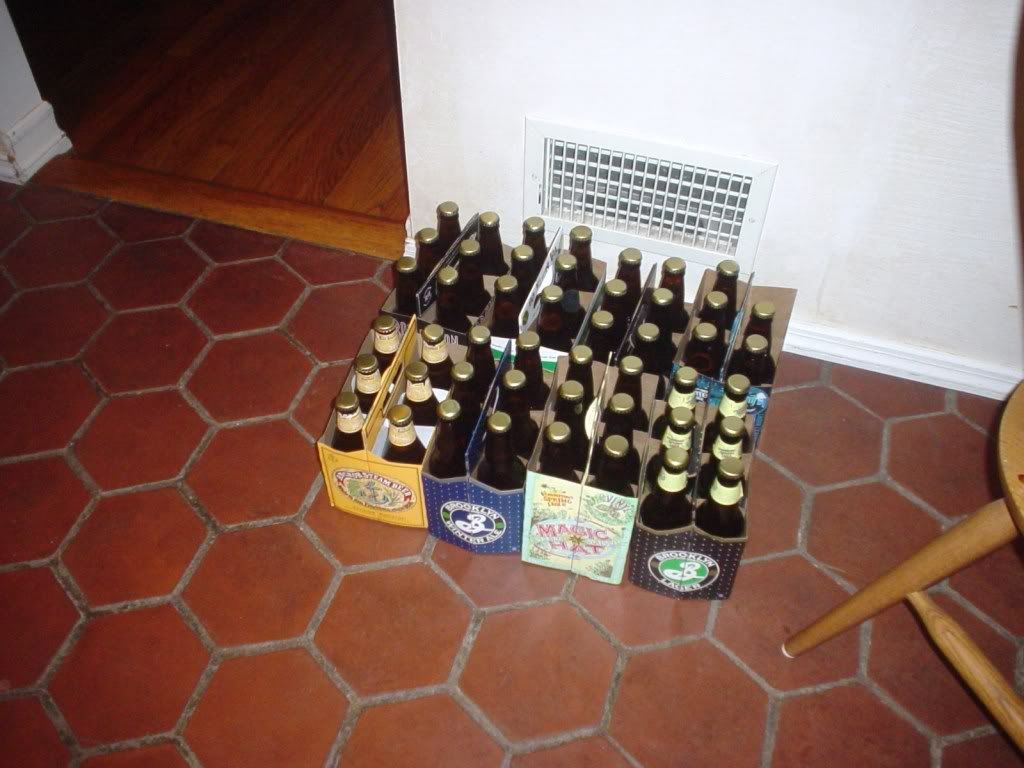
Finished product! - 8 six packs.. err minus a beer.. decided to pour myself a glass instead! hey.. that was some hard work!
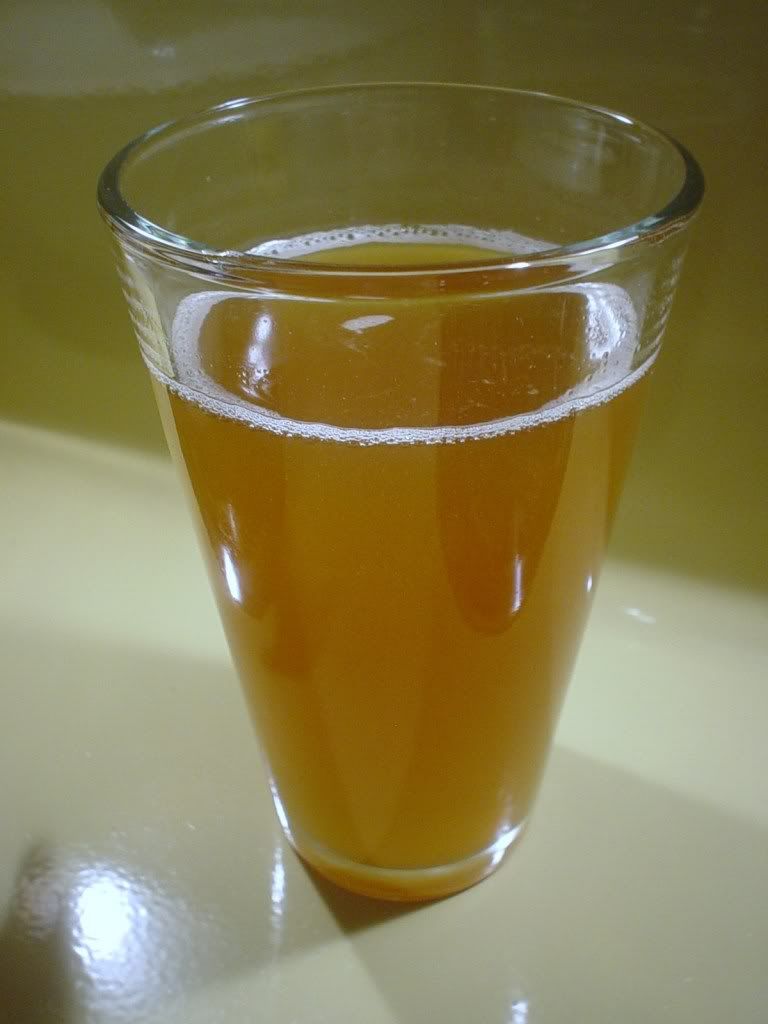
looks promising, tastes even promising-er .. cant wait to see how it turns out
.. cant wait to see how it turns out
made everything much much easier (except for the fact that i had to bring tons and tons of stuff upstairs to my kitchen HAHA... well atleast i got a workout.

racking from the 2 5 gallon fermenters to the bottling bucket (i split 5 gallon batches into 2 5 gallon buckets - couldnt find 6.5 gal free

this is austinhomebrew's cream ale kit. wort hinted that this would be a tasty beer, just right for late spring early summer! after a good pint (leftover from bottling - NOTE THE MISSING BOTTLE!!!) i knew this would be a hit once carbed.

sanitized bottles go on sanitized dishwasher rack to dry.. wow what a great tip! i pull up a chair, sit back relax and start filling!..

once i hit ~18 or so, i start crimping!

Finished product! - 8 six packs.. err minus a beer.. decided to pour myself a glass instead! hey.. that was some hard work!

looks promising, tastes even promising-er
 .. cant wait to see how it turns out
.. cant wait to see how it turns out

